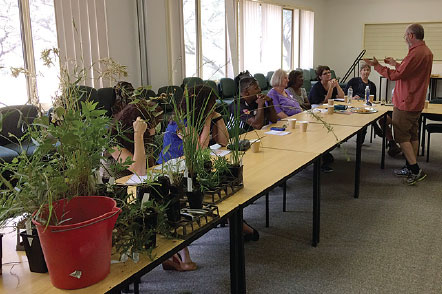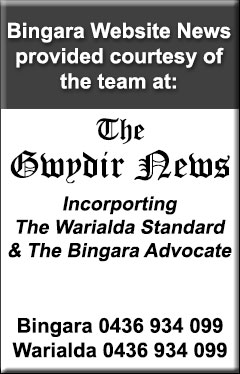In a first for northwestern NSW, a proposal has been made to research local Indigenous Foods and medicines, bringing them into the spotlight and expanding their prominence in the land and on our dinner plates. This could have beneficial spin-offs for the Living Classroom in Bingara.

Learning about wild food.
Representatives from the Indigenous communities of Wee Waa and Narrabri met with representatives from the University of Sydney, Local Land Services, Office of Environment and Heritage, Narrabri Shire Council, Stipa, Bilby Blooms and other community members to discuss which local plants have promise for food creation.
Tens of species of native plants have been used as food sources in this region for thousands of years, but very few are used today.
This proposal will research how to sustainably grow the plants, market the products, and monitor the impact on the environment and the community.
Dr Angela Pattison, plant scientist from the University of Sydney’s campus at Narrabri, is looking forward to seeing the species regain their important role in both the environment and human culture of the region. “Listening to local Indigenous Elders and reading about the amazing plants of the region has made me realise how much knowledge is ‘sleeping’ around us.”
“There are some very tasty and high-yielding species which are perfectly suited to our environment, and hold some of the keys to helping the land and communities of NW NSW and Southern QLD to thrive in the future.”
The proposal involves the creation of an Indigenous Foods Research Park to investigate how these plants grow and what products can be made from them which are suited to modern food markets.
The Research Park is expected to include both a large research area at Narrabri which will be open to the public, plus other partnership sites located around the region.
It will take several years for the Park to become a reality, mainly due to the time for many of these species to grow.
“The University wants to research the things which locals believe will be the most beneficial,” said Dr Pattison. “If anyone has ideas, or is already working on something, we would love to hear from them. With such a buzz in the room at the proposal meeting, we believe the Research Park will become a significant point of collaboration and growth for the region.”
For more information, contact Dr Pattison at angela.pattison@sydney.edu.au or (02) 6799 2253.
This meeting was made possible via the University of Sydney’s Wingara Mura-Bunga Barrabugu program.



